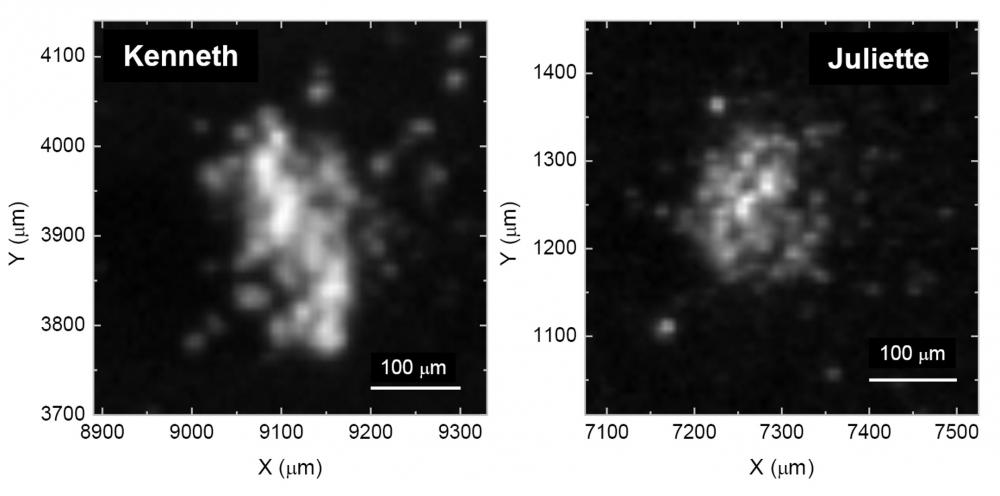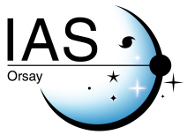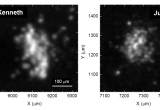Rosetta detects a macromolecular carbonaceous matter in comet Churyumov-Gerasimenko dust particles
A few weeks away from the end of Rosetta mission and after months of data collection and analysis, the scientific team in charge of the COSIMA instrument, a mass spectrometer on board Rosetta, proves the presence of a macromolecular organic component in cometary dust particles.
COSIMA is an instrument under German leadership (MPS Göttingen) with an important instrumental and scientific French contribution. It is a sort of mini laboratory of physical chemistry. The instrument collects cometary dust particles in the vicinity of Churyumov-Gerasimenko nucleus, it detects them, it takes pictures of them thanks to the COSISCOPE microscope which has been built at IAS (co-PI responsibility), and analyses them by a Time-Of-Flight Secondary Ion Mass Spectrometer (ToF-SIMS).
In their recent Nature publication, the COSIMA scientific team, which includes two co-Investigators from IAS, focused on carbonaceous matter detection and identification in comet Churyumov-Gerasimenko dust particles. The authors based their study on comparisons between cometary particles mass spectra, measured in situ by COSIMA, and mass spectra measured in laboratory on a large diversity of standard organic components. This comparison allows to conclude that the carbonaceous matter detected by COSIMA has a macromolecular structure.
This result was eagerly expected by the scientific community. This macromolecular carbonaceous matter could indeed explain, at least to some extent, the dark surface (very low albedo) of the comet that has been observed for example by Philae panoramic cameras (CIVA-P, IAS leadership). Moreover, according to COSIMA analyses, this cometary carbonaceous matter has some similarities with the so-called “insoluble” macromolecular organic matter extracted from some extraterrestrial materials collected and analyzed on earth (carbon rich meteorites and micrometeorites, and Interplanetary Dust Particles). The result is also consistent with some experimental simulations of ices evolution under irradiation. Some of these experiments are performed by the “Astrochemistry and origins” team at IAS, and lead to the formation of a complex organic matter mixture with a macromolecular content that depends on the experimental conditions applied. The observational constraints associated to laboratory simulations and analyses will help improve the scenario of organic matter formation and evolution in the primitive solar nebula.
Contacts at IAS :
Donia Baklouti: 01 69 85 87 88 / donia.baklouti @ ias.u-psud.fr
Yves Langevin: 01 69 85 86 81 / yves.langevin @ ias.u-psud.fr
CNRS/INSU press release : http://www.insu.cnrs.fr/node/5982
Scientific paper :
Fray, N., Bardyn, A., Cottin, H., Altwegg, K., Baklouti, D., Briois, C., Colangeli, L., Engrand, C., Fischer, H., Glasmachers, A., Grün, E., Haerendel, G., Henkel, H., Höfner, H., Hornung, K., Jessberger, E.K., Koch, A., Krüger, H., Langevin, Y., Lehto, H., Lehto, K., Roy, L.L., Merouane, S., Modica, P., Orthous-Daunay, F.-R., Paquette, J., Raulin, F., Rynö, J., Schulz, R., Silén, J., Siljeström, S., Steiger, W., Stenzel, O., Stephan, T., Thirkell, L., Thomas, R., Torkar, K., Varmuza, K., Wanczek, K.-P., Zaprudin, B., Kissel, J. and Hilchenbach, M. High-molecular-weight organic matter in the particles of comet 67P/Churyumov-Gerasimenko. Nature, in press (https://dx.doi.org/10.1038/nature19320)

Pictures of two cometary particles, called Kenneth and Juliette, collected by COSIMA, imaged by COSISCOPE, then analysed by mass spectrometry, and in which organic macromolecules have been detected.
[[{"type":"media","view_mode":"media_responsive","fid":"552","attributes":{"alt":"","class":"media-image","height":"824","typeof":"foaf:Image"}}]]
Comparison between mass spectra measured by Rosetta/COSIMA on the “Kenneth” cometary particle and of macromolecules (IOM, Insoluble Organic Matter) extracted from the Murchison meteorite. The red spectra correspond to the samples, and the black spectra were measured nearby, for reference. The meteoritic IOMs are the only molecules in the reference spectra library to prese similar spectra than the cometary samples. The peak intensities for CH+, CH2+, and CH3+, and the peak intensity for C+ in both samples lead to think that cometary matter is richer in hydrogen, and then better preserved than meteoritic matter.




